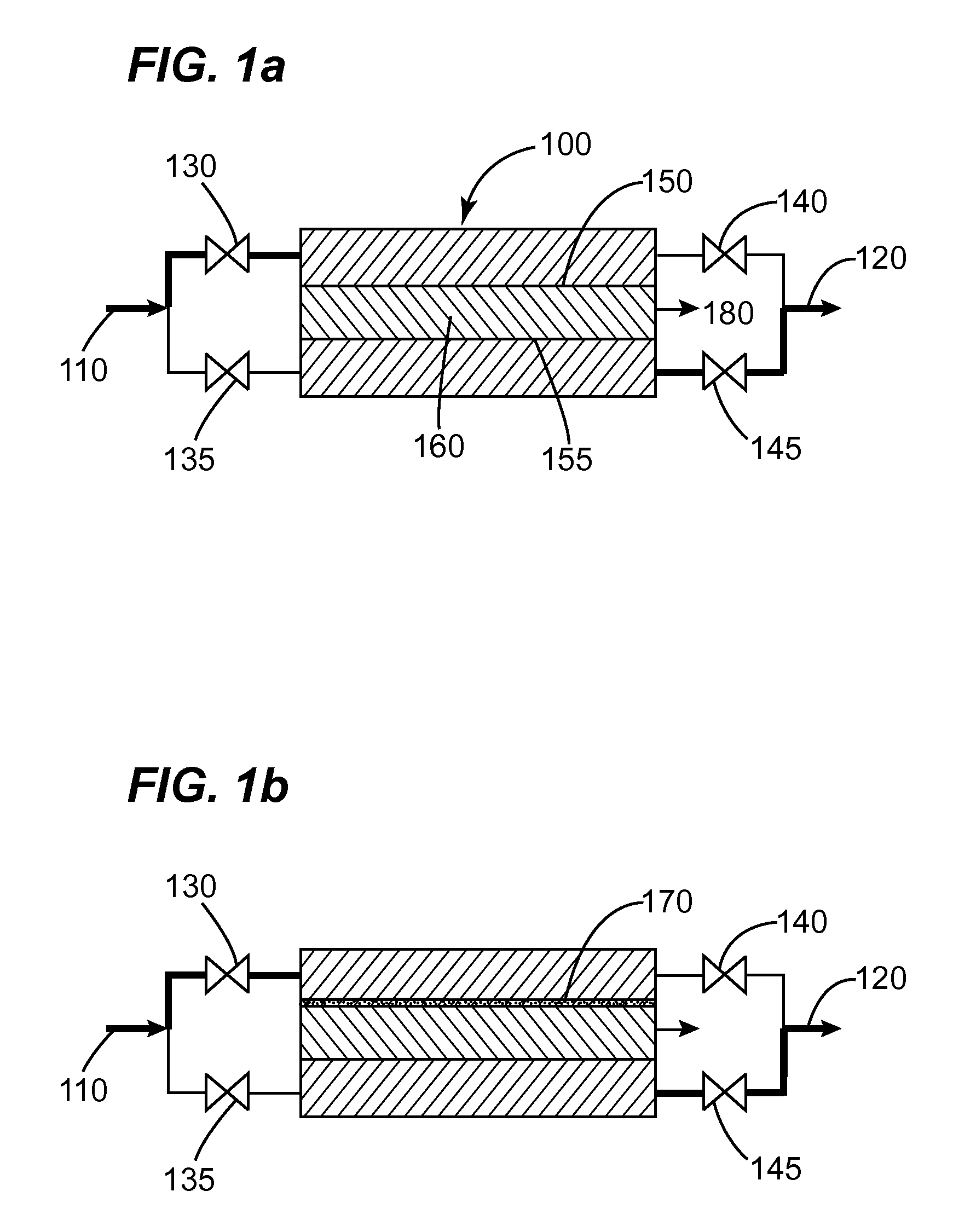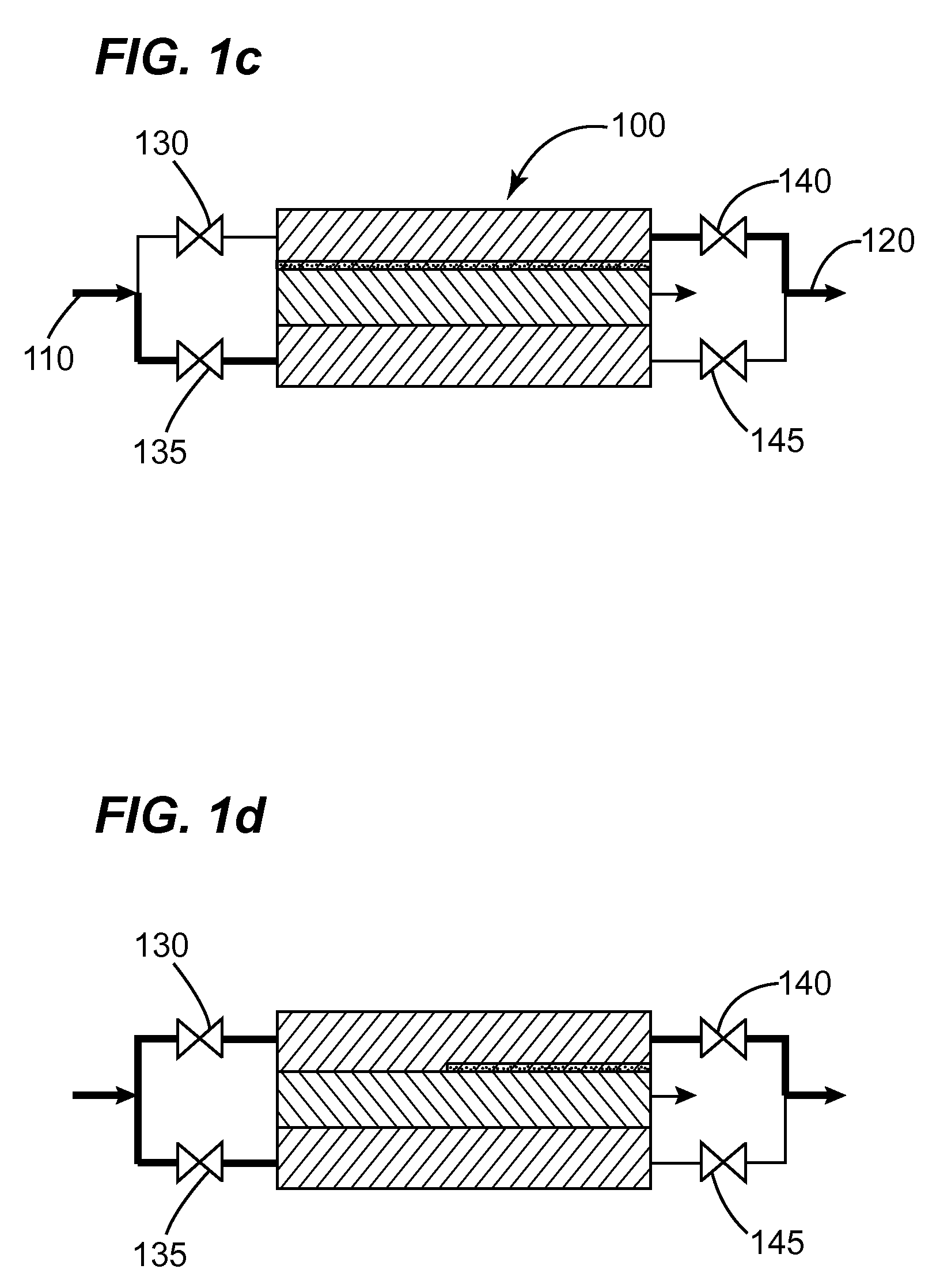In-line filtration systems
a filtration system and filter technology, applied in the field of online analysis systems, can solve the problems of reducing the effective filtration area, affecting the operation efficiency of the analyzer, and affecting the accuracy of the analysis results, so as to improve the effective operation time and prevent cake formation in the filter
- Summary
- Abstract
- Description
- Claims
- Application Information
AI Technical Summary
Benefits of technology
Problems solved by technology
Method used
Image
Examples
example 1
[0059]A functioning flip-flop, cross-flow prototype has been built and shown to work in the lab with high solids material and 30 um screens as filters. The size of the membrane is defined by the particle size distribution in the sample and the desired flowrate required for the analyzer. There are unlimited combinations of membrane pore sizes and flows that may be used. Examples of high solids materials include, but are not limited to, clay, silt, sand, silicates, diatomaceous earth, glass or silica beads.
example 2
[0060]A cooling tower water sample is pumped through a conventional cross-flow filter with a 0.22 micron polyethersulfone membrane at a constant filtrate flow rate of 2 ml / min filtrate flow rate and a 1000 ml / min of cross flow. The sample water contains 7.2 to 24 ppm GE cooling tower treatment polymer. In the first 2 days, the polymer passage through the membrane was 88%. After 6 days in operation, a thin cake layer formed on the membrane surface and the polymer concentration in the filtered water was reduced to 71% of that in the unfiltered sample stream. A brief backwash was conducted on the seventh day and the polymer passage was resumed to the initial value 88%. A series of tests were conducted for different water samples and at different filtrate flow rates. It was observed that the higher filtrate flow rate required the higher backwash frequency. This demonstrates that although the filter can provide a sufficient volumetric flow to an analyzer, the cake formation on the membra...
PUM
| Property | Measurement | Unit |
|---|---|---|
| filtrate flow rate | aaaaa | aaaaa |
| filtrate flow rate | aaaaa | aaaaa |
| concentration | aaaaa | aaaaa |
Abstract
Description
Claims
Application Information
 Login to View More
Login to View More - R&D
- Intellectual Property
- Life Sciences
- Materials
- Tech Scout
- Unparalleled Data Quality
- Higher Quality Content
- 60% Fewer Hallucinations
Browse by: Latest US Patents, China's latest patents, Technical Efficacy Thesaurus, Application Domain, Technology Topic, Popular Technical Reports.
© 2025 PatSnap. All rights reserved.Legal|Privacy policy|Modern Slavery Act Transparency Statement|Sitemap|About US| Contact US: help@patsnap.com



